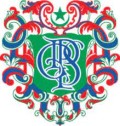Comparison of Bilateral Lateral Rectus Recession Vs Unilateral Recession/Resection for Basic Type Intermittent Exotropia
DOI:
https://doi.org/10.70905/bmcj.05.01.0266Keywords:
basic intermittent exotropia, bilateral lateral rectus recession, unilateral medical rectus resection, unilateral lateral rectus recessionAbstract
Abstract:
Background: Intermittent exotropia (IXT), highly prevalent strabismus type in children, characterized by visual axis intermittent divergence. It can cause greater than 50% of all the exotropia cases. Because of different deviation at near and at a distance, IXT can be grouped as Basic, Pseudo-divergence excess, true distance and insufficiency of convergence. The most common is basic exotropia.
Objective: To compare post-operative ocular alignment in bilateral lateral rectus recession (BLR) Vs unilateral lateral rectus recession/resection (RR) in basic type intermittent exotropia in young patients.
Material and Methods: 96 cases of basic intermittent exotropia who went through surgery were selected. Total duration of study was 18 months from January 2020 to June 2021. The patients were categorized into BLR group and unilateral RR group based on type of surgery received. Based on motor outcomes, patients were categorized as: 1) successful alignment (Orthophoria) Esophoria/tropia< 10 Prism diopters to Exophoria/tropia< 15 Prism diopters.2) Overcorrection (Esophoria/tropia>10 Prism diopters) 3) Under-correction/recurrence (Exophoria/tropia> 15 Prism diopters). Surgical outcome including motor criteria and sensory status compared at post-operative 03, 06, 09 and 12 months between groups.
Results: The mean age at the time of surgery was 12.68 ± 8.12yrs. for BLR and 13.88 ± 8.34yrs. for RR group. The rate of successful alignment was 70.83% (n= 34) for BLR group and 58.33% (n=28) for RR group at final follow-up visit (p=0.200). At 03 months, RR had better alignment rate while BLR had superior outcome at 06-, 09- and 12-months’ follow-up visits. The secondary outcome i.e. stereopsis recovery rate was also comparable between the two groups at final follow-up of 12 months (p-value= 0.159).
Conclusion: The motor outcomes in BLR group were comparable to RR group at the final follow-up visit.
The rates of under-correction were higher in RR group (though not statistically significant) at 12th month visit.
Downloads
Published
How to Cite
Issue
Section
License

This work is licensed under a Creative Commons Attribution-NonCommercial 4.0 International License.








